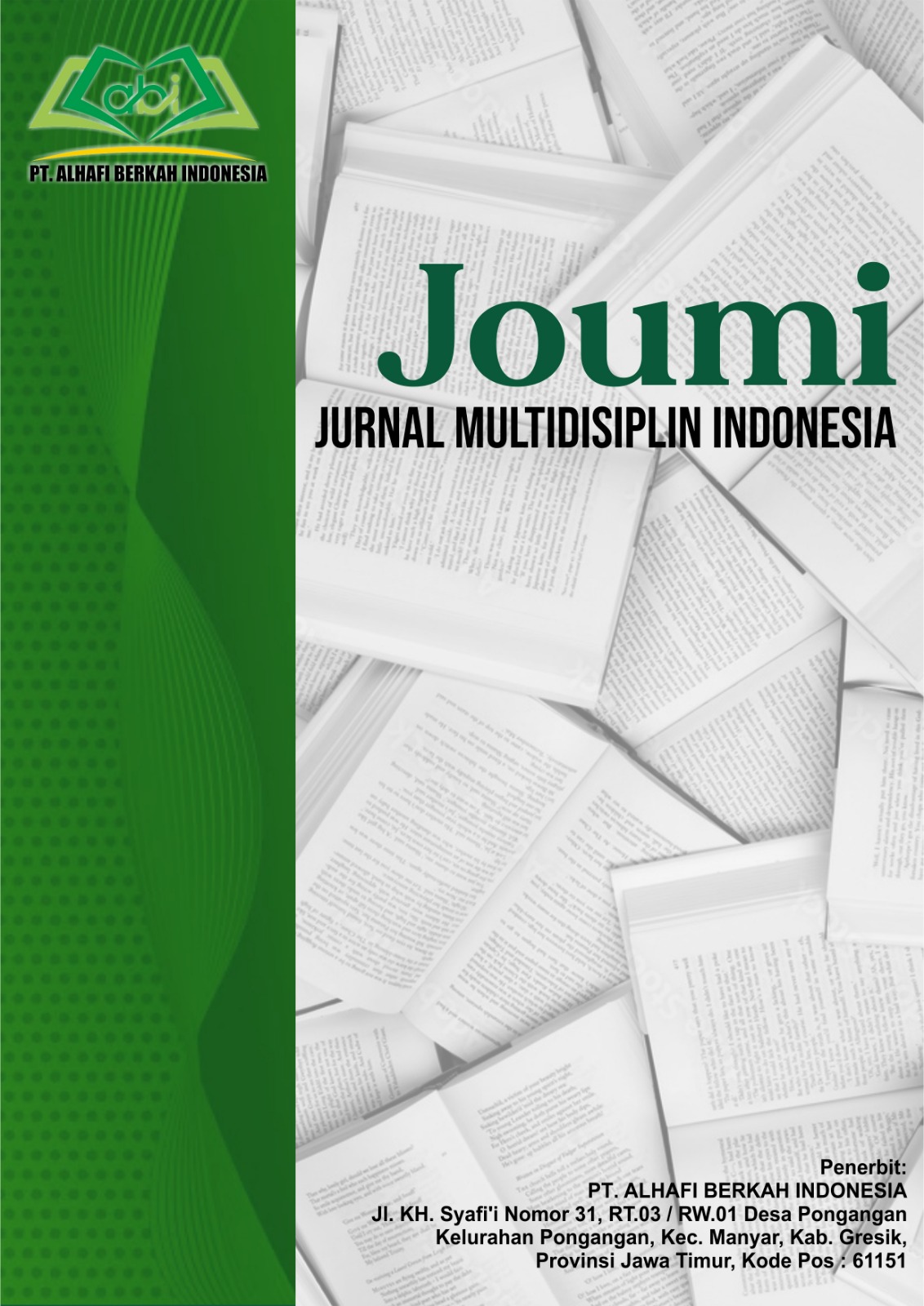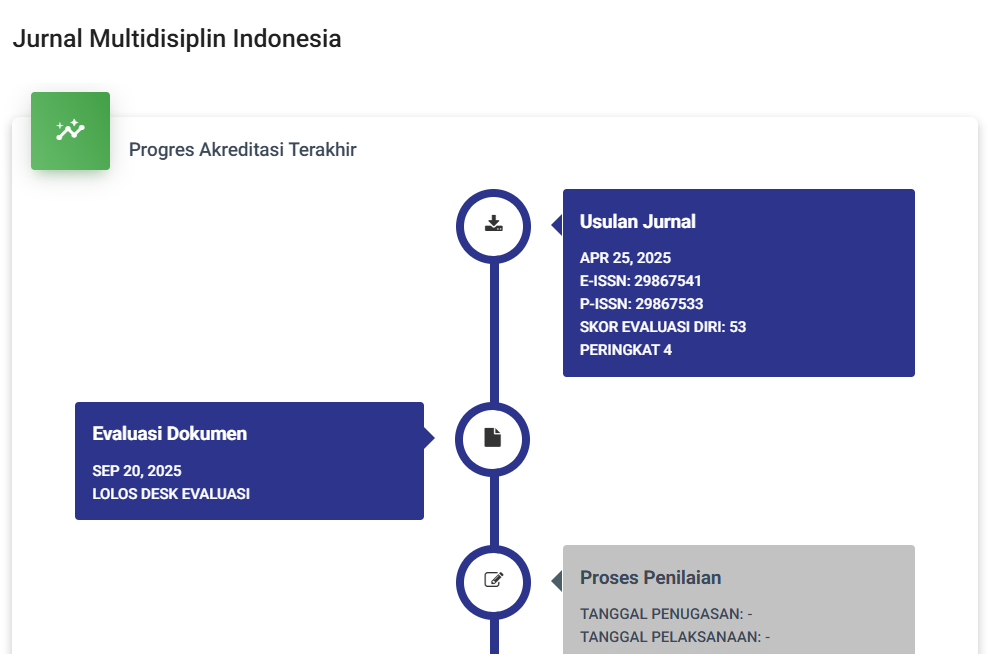Utilization Of Human Resources Analytics In Corporate Strategic Decision Making at PT Coca Cola Amatil Indonesia
DOI:
https://doi.org/10.62007/joumi.v3i2.512Keywords:
HR Analytics, Strategic decision-making, Human resource managementAbstract
This study examines the use of Human Resource (HR) Analytics in strategic decision-making in companies, with a case study at PT Coca Cola Amatil Indonesia. The approach used is qualitative, using library research methods and in-depth interviews with managers and staff of the company's HR department. HR Analytics is a data-based approach used to analyze trends, performance, and predictions of human resources to support more accurate strategic decisions. The study results indicate that PT Coca Cola Amatil Indonesia has implemented HR Analytics in several critical aspects, such as recruitment, performance management, and employee retention. The data collected is used to identify potential risks, support workforce planning, and improve organizational efficiency and productivity. These findings indicate that the use of HR Analytics has a significant contribution to strategic decision-making and increasing the company's competitiveness sustainably.
References
Agit, A., & Muharram, S. (2024). Artificial Intelligence Capability in Education to Enhance Human Resources Quality from Economic Perspective. 738–746.
Ahmad Shakir, I., & Iqbal Khan, T. (2022). Green Human Resource Management Practices: A Study on The Banking Sector of Pakistan. INTERNATIONAL JOURNAL OF ECONOMICS AND BUSINESS ISSUES, 02(02), 67–90.
Alma, S., Nur, S., Zulkiffli, A., Hazimah, N., & Mat, N. (2024). The Link between Green Human Resource Management and Job Performance: Investigating the Mediating Role of Organizational Culture. Journal of System and Management Sciences, 14(12), 114–128. https://doi.org/10.33168/jsms.2024.1207
Alsakarneh, A., Shatnawi, H. A., Alhyasat, W. B. A. K., Zowid, F., Alrababah, R. A. M., & Eneizan, B. (2024). The effectiveness of human resource management practices on increasing organizational performance and the mediating effect of employee engagement. Uncertain Supply Chain Management, 12(2), 1141–1154. https://doi.org/10.5267/j.uscm.2023.11.019
Haryadi, Y., Narimawati, U., & Syafei, M. Y. (2024). Tec Empresarial The Effect of Information Technology Utilization. Business International Management, 21, 13–26. https://doi.org/https://doi.org/10.1229/tecempresarialjournal.v19i2.490
Herder, J. (2024). AI-Driven Human Resource Analytics for Enhancing Workforce Agility and Strategic Decision-Making. Economic Development, 1(5), 471–485.
Liu, C. H., Chang, A. Y. P., & Fang, Y. P. (2020). Network activities as critical sources of creating capability and competitive advantage: The mediating role of innovation capability and human capital. Management Decision, 58(3), 544–568. https://doi.org/10.1108/MD-08-2017-0733
Mubarak, N., Khan, J., Ali, M., & Pesämaa, O. (2024). Roadmap to Achieve Green Project Performance: The Role of Knowledge Co-creation. Journal of the Knowledge Economy, 0123456789. https://doi.org/10.1007/s13132-024-01779-2
Nurbiyati, T. (2012). Learning Organization Sebagai Strategi Meningkatkan Keunggulan Kompetitif. Jurnal Wahana, 15(1), 51–60.
Nurcahyo, S. A. (2024). The Role of Organizational Learning Culture and Workplace Empowerment in Improving Workplace Spirituality through Knowledge Sharing Behavior as a Mediation Variable. International Journal of Islamic Business Ethics, 9(1), 15. https://doi.org/10.30659/ijibe.9.1.15-31
Nurcahyo, S. A., Widagdo, T. H., & Ali, A. (2024). Talent Management Strategy in Career Development with Capacity Building Practices within the Local Government Organization of Semarang Regency. Proceedings of the 4th International Conference on Law, Social Sciences, Economics, and Education, ICLSSEE 2024, 25 May 2024, Jakarta, Indonesia, 02, 19–34. https://doi.org/10.4108/eai.25-5-2024.2348957
Oladapo, I. A. (2024). Enhancing sustainable performance among Islamic banks in Saudi Arabia: the role of management support and environmental innovation. Cogent Social Sciences, 10(1). https://doi.org/10.1080/23311886.2024.2433701
Ono. (2020). Mechanism of humanistic leadership for success: lessons from Konosuke Matsushita. Cross Cultural & Strategic Management, 27, 627–644.
Ramles, P., & Br Perangin Angin, R. (2024). Leadership Development Strategies in Organizations: The Role of Human Resource Management in Improving Effectiveness and Productivity. Jurnal EMT KITA, 8(2), 801–810. https://doi.org/10.35870/emt.v8i2.2382
Solehudin, M., Surachim, A., Purnamasari, I., & Indonesia, U. P. (2023). Pengaruh Leverage dan Profitabilitas terhadap Nilai Perusahaan: studi pada KBW NASDAQ Financial technology index periode 2016-2021. Strategic: Jurnal Pendidikan Manajemen Bisnis, 23(1), 57–66.
Sudarmanto. (2009). Kinerja dan Pengembangan Kompetensi SDM (2nd ed.). Pustaka Pelajar.
Sugiyono. (2013). Metode Penelitian Pendidikan Pendekatan Kuantitatif (2nd ed.). Gramedia Pustaka Utama.
Suripto. (2012). Manajemen SDM Dalam Persfektif Ekonomi Islam. Jurnal Ekonomi Syariah Indonesia, 02, 49–57.
Syaiful, B. (2018). Metode Penelitian Bisnis - Lengkap Dengan Teknik Pengolahan Data SPSS (1st ed.). ANDI Press Publihser.
Yunita, P. &. (2024). Pemilihan Umum Sebagai Bentuk Perwujudan Demokrasi di Indonesia. Journal of Practice Learning and Educational Development, 4(2), 137-142.
Downloads
Published
How to Cite
Issue
Section
License
Copyright (c) 2025 Laura Mizela da Costa, Pudji Astuty

This work is licensed under a Creative Commons Attribution-ShareAlike 4.0 International License.







